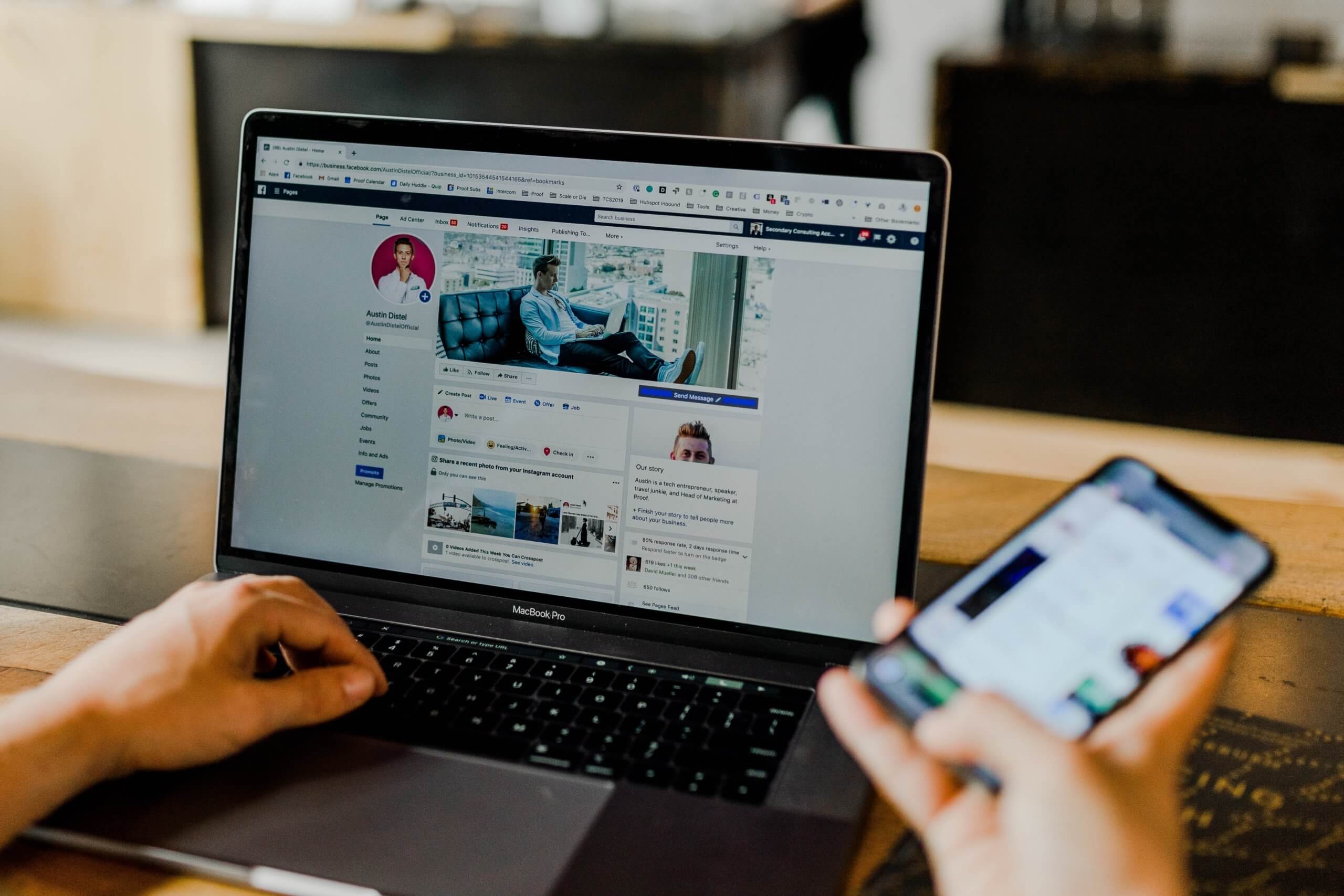How to build relationships with the media? Good practices and most common mistakes

Author
Media relations is a tool used in more than just classic PR. Not a single good content marketer or creative agency employee can imagine a day without it. So, how should you build relationships with the media – where to begin, for what purpose should it be used, and how not to ruin them? We encourage you to read this substantial piece of knowledge prepared in collaboration with Gazeta Wyborcza journalist Joanna Dzikowska.

Why do we need good relationships with the media?
It doesn’t matter if we mean traditional media (press, radio, television), or Internet journalism; we call it the “Fourth Estate.” Thanks to good relations with journalists, we’re able to maintain good communication between an organization and the surrounding social environment. Of course, a company can do it on its own (via its website or social media), but the reach is reduced. Additionally, information passed through journalists is often perceived as more credible and neutral.
If our media relations are conducted well, then it allows us to successfully undertake actions in the PR field for a certain company or organization. Each press release passed to the media is a stone that builds a brand’s image, increases its recognition, and shapes user awareness.
Publications in the media are good for more than just image operations but are closely related to them. Journalist portals are a really valuable place for conducting advertising actions (for example, announcing the introduction of a new product or service) and content marketing (such as obtaining links). It doesn’t matter the size or budget of a company; the tool can be effective for anyone who uses it properly.
Where to look for contact information for media representatives?
To acquire the desired effects of media activities, we should reach out to the journalists first. However, how do we find them? When compiling a list of contacts, we should consider who our content may be of interest to. If we work in a specific industry (like real estate or new technologies), we should look for portals and then for journalists that deal with the subject. To do so, we can manually browse through certain Internet sources (“contact” tab and look for author profiles) or use a pre-made database (such as the Media Almanac or MediaContact from IMM).
According to Joanna Dzikowska from GW, quality is more important than quantity: “It’s better to have a couple of befriended contacts in an editorial than a huge database of unfamiliar contacts. Even if I receive information that I don’t find useful, I will send it to someone who knows what to do with it, or I’ll let someone know that such a subject “hangs” in the inbox, and it’s worth checking out”.

Another way of searching for contacts is through social media. A perfect platform for that is LinkedIn, which displays people working for the company we searched for. Twitter is also a good place where journalists often hang out. All you need to do is type in a desired phrase into the internal search bar, like “journalist” or “editor,” and mark that you’re interested in “people.”
How to contact journalists?
Let’s assume that you already have a media database. The easiest form of contact would probably be emailing (even for the simple fact that you can add attachments to the message), but journalists don’t rule out other forms of communication. As Joanna Dzikowska says:
“It all depends on the nature of the relationship and preferences. No one will take offense if you ask, «What kind of contact do you like the most? Where will you reply faster? Do you prefer to handle business over the phone? Can we get in touch on Facebook?» It’s neither a faux pas nor a bad form of communication. For most journalists, social media are just another tool.”
If we want to build long-lasting relationships with the media, we should better give up mass mailing. Personalizing the message is a big step towards earning the trust and attention of journalists. Mentioning the name at the beginning of the email won’t suffice (this can be done even by the machine). We can, however, refer to an article written by the editor or to his field of work, interests, etc.
Form is not the only thing that matters when contacting the media, as time also plays a crucial role. We should check the editorial’s working hours (it’s best to send a message before editorial meetings). We shouldn’t “attack” a journalist in the evening through social media. Let’s also give up sending mass emails to the media when there are a lot of things happening. Instead, we should use seasonality and refer to current events.
The perfect press release according to a journalist
We know with whom, how, and when to make contact. Now, we need to think about what we should send to the journalists. Oftentimes, it’ll be the press release, frequently completed with images or video material. But what traits should a good press release have, according to a journalist?

Simple, short, and in order
Keep It Simple Stupid, i.e., KISS is a golden rule of creating a message directed to media. We should use simple, concise language without long sentences or professional terminology. The most important information should be placed at the beginning (even better if we can do it in the lead), and the rest should be arranged in a logical order to make one thing the result of the other. We should use concrete examples and numbers. One A4 page is the maximum when it comes to the length of the press release.
Important and interesting to the recipient
For recipients, the most significant information is that which relates to or is close to them, for example, close events (a regional aspect), news, rankings, or comparisons. An excuse can also be an ongoing event that, for some reason, is essential for our readers (real-time marketing). We should remember that the things that are interesting to our readers will also be interesting to the media.
Triggering emotions
Curiosity, jealousy, fear, and emotionality—let’s try to make the reader feel emotions caused by our message. Let’s be careful not to be overly sensational, though. In this case, storytelling may be helpful, i.e., adding context or a story with its own hero. We should describe someone, not something, and we should avoid impersonal forms.
Credible
If we present the results of certain research, we should definitely add information about methodology or sources at the bottom. All statements and quotes should be backed up with names. It’s crucial to remain impartial – don’t judge, write in the third person, and be neutral toward the content.
Exceptional and attractive
The desired trait of each press release is the element of being fresh and surprising. It’s good to use phrases like “for the first time since…” and “it’s the first time in…” – as they create a unique and up-to-date character for our message. If we can get help from famous people or brands (VIPs), journalists will appreciate that even more.
How NOT to develop relationships with the media?
The biggest mistake that we can make during contact with journalists is a lack of message adaptation (in terms of topic and format). Whenever we contact a journalist that doesn’t deal with our subject, that is also unacceptable (for example, sending a finance press release to a fashion journalist). To avoid that, we should browse through the author’s publications or ask the editorial for contact information for a person that deals with a specific industry.
To the list of press release cardinal sins, we can also add linguistic and substantive errors, as well as the unaesthetic look of the text. We should respect the journalist’s time and deliver complete information. We shouldn’t send drafts, incomplete, or unverified messages. Take into consideration the fact that a journalist won’t always have the time to thoroughly read the text and may just copy it as it is. A disadvantage would be an incorrect email title that is inappropriate for the rest of the content or is too general (for example, a press release).

Good relationships with the media are also ruined by being too active. If we send a message and don’t receive a reply, we can (or we must) send a follow-up – but one phone call or email will be enough. The same is true for the frequency with which materials are sent: let us not write about everything, but only the most important events.
We can’t let a situation arise in which we lack knowledge about the subject we deal with. We should expect that there may be situations where a journalist will reach out first with questions about the topic. That’s why we should be available to answer calls or reply to emails in a timely manner. Sending messages before time off or a company meeting would definitely be a bad idea.
“If we didn’t have any phone contact prior, there should be a number in the email – it’ll come in handy whenever we need the answer quickly” – Joanna Dzikowa says.
What else should we remember when cooperating with a journalist?
Each person likes to be treated nicely—media representatives too! To make a journalist like you, offer him or her something “extra.”. It may be exclusive content, additional materials, or making them first in line to receive news.
Multimedia files attached to a press release shouldn’t be something that’s considered optional but rather a “must have” for each press release. Images should be formatted horizontally (better visibility on a website) and after compression. Of course, you can’t forget to mention the author and to ensure the journalists that they can use the image. Files should be saved as either .png or .jpg formats. If we want to send more materials, we can use applications such as Dropbox or WeTransfer.
Follow-ups are more than welcome, but – as we mentioned before – in a reasonable number. Editorial inboxes are frequently bombarded with messages; that’s why our email can simply go unnoticed. It’s worth referring to a previous contact you had or to previous successful publications. By doing so, we can strengthen the relationship.
“Emails asking for a reply, we answer more frequently. It sounds dull, but the majority of messages come down to one phrase «I would like to send you a press release…» – that’s it. If it’s a befriended contact, then it’s better to ask directly: «Will you need it? Maybe you’d like to do it differently? Perhaps someone else will be interested?»” – says our befriended journalist.
Summary
Developing relationships with the media is a long-term process that requires patience and an individual approach. Despite many journalists working similarly, the rules and practices across editorials may differ. When we get to know the style of work of a certain journalist, other contacts will be much easier, and we will be more confident.
Every time we should see things through the eyes of the media, we should put ourselves in the shoes of a journalist and consider what, who, and why we should message them. Honesty and cooperation on a topic should take precedence over bombarding with messages that do not align with the interests of journalists or editors.
At the end, we asked Joanna Dzikowska if it’s worth developing long-term relationships with journalists (and is it even possible)?
“It is – and it’s possible, but not easy. It’s best if a person who contacts the media is from the same field as the journalist, then both sides may want to maintain the relationship. It’s good to ask about what ideas or needs the journalist has because these similarly simple things, when tailored, have high chances of getting published in a portal or press. It’s also nice to meet in person at an event. Afterward, such a relationship can only get better”.